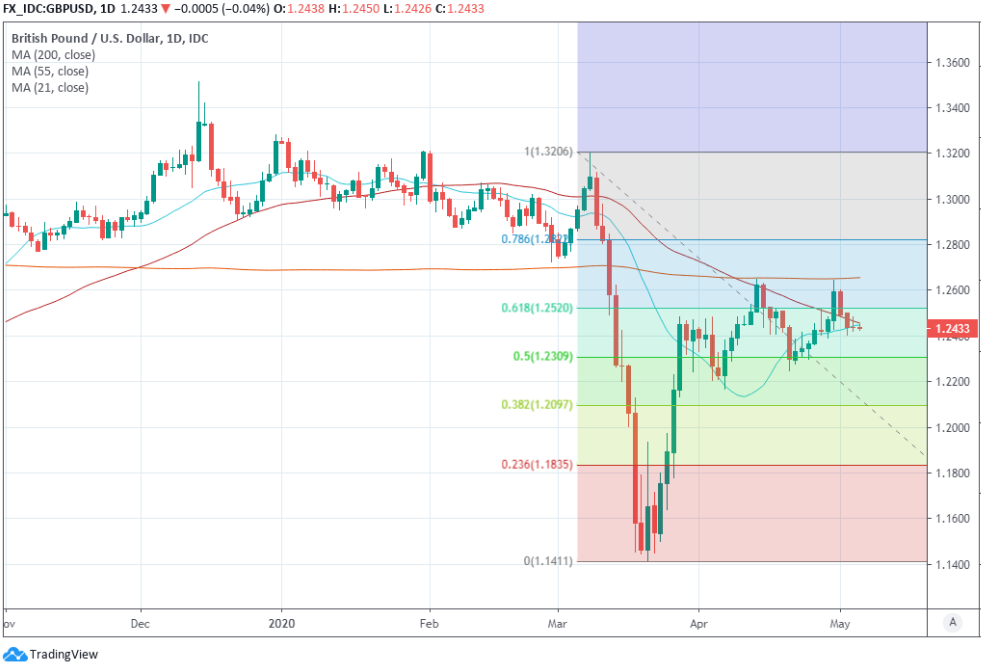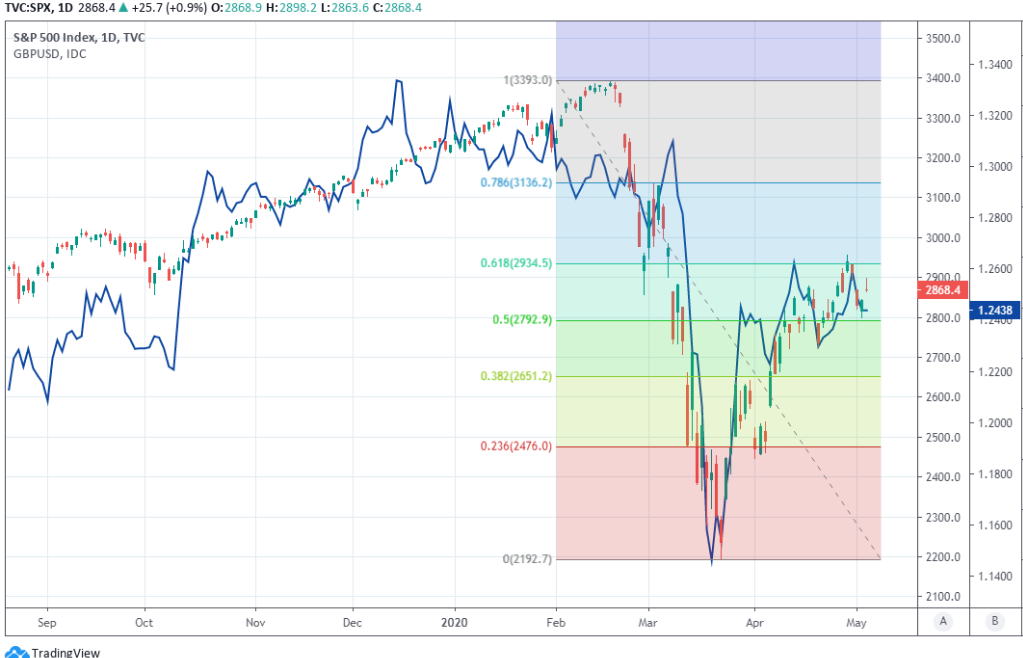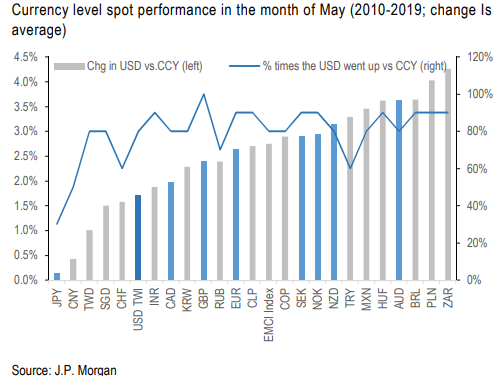Pound-Dollar Rate Outlook Tarred Further by Return of Trade Tensions
- Written by: James Skinner
-
- GBP/USD slips below 21-day average after ceding 1.25 handle.
- As U.S.-China tensions add to Brexit and seasonal headwinds.
- J.P Morgan says to "stay defensive" and remain short GBP/USD.
- Warns U.S.-China deal may fail, seasonality set to weigh on GBP.

Image © Adobe
- GBP/USD spot at time of writing: 1.2444
- Bank transfer rates (indicative): 1.2164-1.2252
- FX specialist rates (indicative): 1.2314-1.2389 >> More information
The Pound-Dollar rate has attempted to stabilise this week but the outlook for it has been tarred further in recent days by a return of trade tensions between the U.S. and China, which have got some analysts looking for a continued outperformance by the Dollar.
Pound Sterling has ceded the 1.25 level back to the Dollar after being repulsed by the 200-day moving-average at 1.2652 last week while attempts to reclaim either have failed so far in the new week, which has seen the Dollar Index arrest a punishing six-day sell-off. The Pound-Dollar rate also slipped below its 21-day moving-average of prices at 1.2449 Tuesday and was in retreat from their early on Wednesday as fundamental headwinds continued to build.
U.S.-China trade tensions have been stirred and could again become a persistent feature of the landscape in the months ahead if President Donald Trump continues with allegations the coronavirus originated in a Wuhan research lab and that other countries were denied preparation time by Chinese government attempts to cover up the virus that was first detected as both looked to sign a deal that ended their tariff fight.
"We think it is premature to throw in the towel on a defensive stance given low visibility, poor liquidity, the dollar’s asymmetric response to volatility shocks and EM funding vulnerabilities. In the very near-term, escalating US-China tensions and typical May seasonality will be the focus," says Daniel Hui, a strategist at J.P. Morgan. "Stay long a combination of USD and CHF vs. shorts in vulnerable candidates (EUR, GBP, CAD, NZD, SEK)."

Above: Pound-Dollar rate at daily intervals. Back below 61.8% Fibonacci retracement of 2020 downtrend, key averages.
U.S. State Department officials appeared to contradict each other in separate on-the-record remarks about policy toward China this week, with the latest remarks seeming to walk-back earlier suggestions that efforts to remove international supply chains from China would be stepped up in the weeks ahead. This was after President Donald Trump threatened to impose fresh tariffs on exports coming from China last week.
Some officias are tying each other in knots but President Trump has been clear in his sentiments and will face a ballot box in November, amid the worst the recession in living memory and likely with unemployment having rocketed from multi-decade lows to Great Depression era highs within the space of a few short weeks. Then there's the death toll, which crossed 70k this week according to Johns Hopkins University data, underlining the heavy human cost of the crisis.
"The use of tariffs in a COVID-19 context could cause January’s US-China Phase 1 deal to unravel," Hui says. "May has seasonally been a good month for the dollar. The broad dollar index has strengthened in May by an average of 1.8% in eight out of the last ten years. While it is not immediately clear what the driver of such seasonality is, it could be part-related to increased net foreign inflows into USD debt during the month."

Above: S&P 500 at daily intervals, fails at 61.8% Fibonacci retracement of 2020 downtrend, with GBP/USD rate (blue line).
Fresh U.S. tariffs on Chinese exports would place a further question mark over the shape and timing of any global economic recovery from the coronavirus so would be another headwind for commodity and risk-sensitive currencies. The Pound-Dollar rate has a positive correlation with the S&P 500 and investor risk appetite but neither would do well from a trade war 2.0.
J.P. Morgan sold the Pound-Dollar rate at 1.2270 in April and is looking for the exchange rate to remain trapped below the 1.25 handle through the rest of 2020. It cites a runaway increase in government spending that's aggravating the current account deficit, an increased risk of a 'no deal' Brexit later this year, trade tensions and seasonal factors for its bearish view on Sterling.
Seasonal factors are an increasingly important influence on markets in May. It's not clear what the exact reason is but seasonal flows tend to lift some currencies while weighing on others during the month of May, which has seen the Dollar rise in eight out of the last ten years and by an average of 1.8% while the S&P-correlated Pound Sterling has fallen against the greenback in each of those years. That's a further headwind for the British currency to contend with.

Above: J.P. Morgan graph showing average USD gains over rival currencies during month of May.










